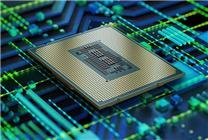Intel Processor Price Surge: A Deep Dive into Recent Trends
- Significant Price Increases: Intel’s 12th, 13th, and 14th generation Core processors are experiencing notable price hikes, particularly in South Korea and Japan.
- Market Response: Mid- and low-end models are most affected, with some processors increasing by over 30% within a short span.
- Consumer Impact: Buyers may face tougher decisions as the cost of upgrading or building PCs climbs due to these hikes.
In a notable shift within the tech community, Intel’s 12th, 13th, and 14th generation Core processors have seen substantial price increases in various regions globally. Recent trends indicate that this surge is most pronounced among mid- to low-end models, significantly impacting consumer decisions and the overall market landscape.
Regional Trends: South Korea and Japan Exemplified
Prices for Intel’s Core processors jumped sharply, particularly in South Korea. A recent report shows that the price of the i5-14400F processor surged by around 20% in just a few weeks, following a similar trend in Japan. This aligns with alarming trends analyzed by local price comparison platforms, where the LGA 1700 series processors have witnessed noticeable inflation.
Specific Price Changes
- The i5-12400F (12th generation) saw an 11% increase, escalating from approximately 159,140 won to 177,290 won.
- The i3-13400F (13th generation) exhibited a price hike of about 14% in less than three weeks.
- The i3-14100F (14th generation) rose about 15%, changing from 121,990 won to 140,000 won.
- Meanwhile, the i5-14600KF and i5-14400F registered increases of 13% and 6%, respectively.
This trend is not limited to entry-level processors; even high-end processors have succumbed to the price surge. The i9-13900K’s price soared by nearly 30%, from 967,000 won to approximately 1.25 million won in a week, shocking many consumers and industry observers alike.
What’s Behind These Increases?
Several factors contribute to the current price fluctuations in Intel’s processor market:
- Supply Chain Issues: Ongoing global supply chain challenges continue to affect component availability, causing upstream costs to rise.
- Market Demand: Increased demand for high-performance computing due to the rising adoption of AI technologies also drives prices up.
- Geopolitical Factors: Trade policies and tensions between major economies can unexpectedly impact material accessibility and production processes.
Consumer Considerations and Future Outlook
The recent price increases pose challenges for consumers looking to upgrade their systems or build new ones. As prices continue to rise, many tech enthusiasts may reassess their purchasing timelines and budgets. Some potential strategies consumers could employ include:
- Delayed Purchases: With prices in flux, waiting for stabilization might save consumers money in the long run.
- Exploring Alternatives: Potential buyers could consider alternative brands or older generation processors that may still deliver satisfactory performance without the inflated cost.
- Monitoring Trends: Keeping abreast of market and price trends can enable consumers to make informed purchasing decisions.
Conclusion
With Intel’s Core processors experiencing significant price increases, particularly in key markets like South Korea and Japan, consumers and tech enthusiasts must navigate this challenging landscape. Understanding the reasons behind these price surges and adjusting strategies may be crucial for anyone looking to invest in new computing hardware. Consumers should remain vigilant and informed as they approach potential upgrades during this unpredictable market phase.
In summary, the abrupt rise in Intel processor prices highlights the adaptive nature of technology markets amid global economic pressures. Stakeholders from consumers to retailers will need to stay attuned to these changes as the landscape continues to evolve.






